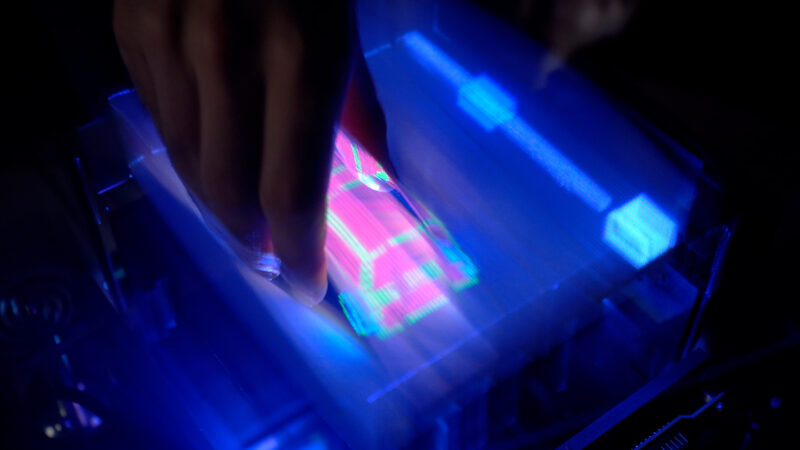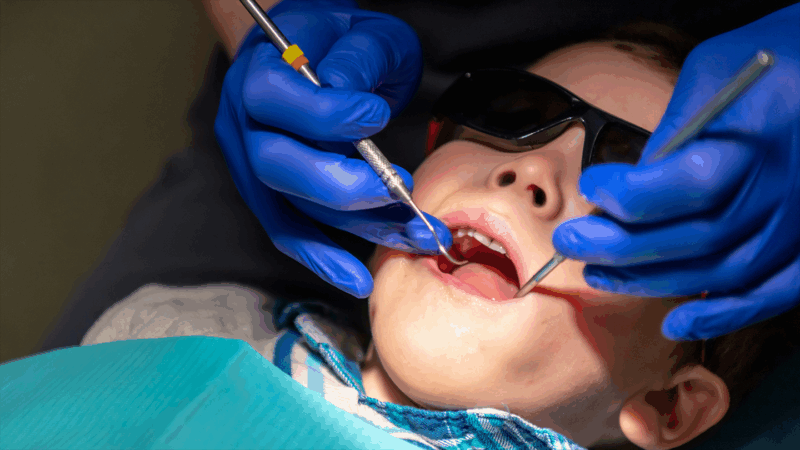Each year, 2 million Americans injure their shoulder’s rotator cuff. That includes many teens, who may hurt their shoulder while participating in sports, such as baseball, volleyball and swimming. Many of these injuries are hard to treat. Only about one in three get surgical fixes. But a new type of device — inspired by snake teeth — might help more of those surgeries succeed.
The rotator cuff is a group of muscles and tendons in the shoulder. Injuries here can include tears and inflammation that cause pain and limit use of the joint. Surgical repairs are meant to fix a torn tendon, often reattaching it to the head of the arm bone. But sutures, or stitches, are anchored at only a few points in the tissue. That puts a lot of force on each point. That pulling can often retear the already fragile tendon.
A new medical device (illustrated at left) features tiny pythonlike teeth designed to hold fragile tissues without tearing. Researchers hope it will improve outcomes for those who have rotator-cuff surgery.I. Kurtaliaj et al/Science Advances 2024
With the likelihood of retearing, doctors sometimes decide not to operate. And even when they do, the treatments don’t always work. Rotator-cuff surgeries fail between 20 and 94 percent of the time.
Stavros Thomopoulos is a biomedical engineer at Columbia University in New York City. He’s part of a team that designed a device to overcome this problem. It uses rows of small, pointed “teeth” that latch onto the tendon and bone. All those extra points of attachment spread and lessen the force on each part of the damaged tissue. Used along with standard sutures, it should lessen the risk of tearing. And that should improve treatment outcomes, researchers report in the June 28 Science Advances.
Do you have a science question? We can help!
Submit your question here, and we might answer it an upcoming issue of Science News Explores
A better grip for shoulders
What inspired the new system? A predator with a strong grip.
Unlike teeth designed to cut — like a shark’s razor-sharp triangles — a python’s fangs are made to hold on tight. They curve inward. This means they dig deeper when an animal struggles. “This was kind of a lightbulb moment,” recalls Thomopoulos.
The team first calculated the best size and shape for teeth in the new device. To do this, they used computer simulations and math. Then they 3-D printed teeth, both singly and in sets. Afterward, they ran tests with the device to figure out the best tooth placement and grip.
The research team was inspired by the gripping power of a python’s curved fangs.Knightpics Photography/Alamy Stock Photo
Afterward, the engineers partnered with surgeons. This team tested versions of the teeth on cadavers. (These human bodies were donated after death to use for science.)
Each body got rotator-cuff tears in each shoulder. The team fixed one shoulder with only sutures. The other, they repaired with sutures and the new device.
“We mechanically tested the strength that the device was adding,” says Iden Kurtaliaj. A bioengineer on the team, she works at the Icahn School of Medicine. It’s at Mount Sinai in New York City. Shoulders repaired with their device had twice the holding strength as those without, their data show.
“A device like this is much more elegant than what [doctors] use now,” says Eric Nauman. A biomedical engineer at the University of Cincinnati in Ohio, he did not take part in the new work. “Anything you can do for the shoulder right now is a win,” he says.
But more steps are needed before such a device can be used to treat people.
The design needs to be tested in live animals to see if it’s safe and works well long-term. That’s according to Ghanashyam Acharya. A biomedical researcher who did not take part in the new study, he works at Baylor College of Medicine in Houston. As the body heals, for example, the device’s material could break down or injure the tendon, he notes. Still, he says, the concept is promising. He calls it a “significant and innovative first step” toward more effective rotator-cuff surgeries.

















